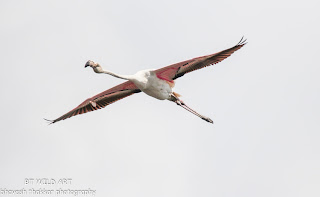Dashing Wolf
Hello
friends, wish you all a very happy Sunday, for me now Sunday has become Blog
day.
Writing
is wonderful feeling as it gives opportunity to write my heart out and share
wonderful experiences with lovely readers. Today I am in double mind on topic to introduce, a bird or a animal, finally the choice for today’s blog is Indian Wolf. What a Dashing animal especially when you see it on green grassland.
I
will never forget sighting of Indian Wolf somewhere near Nasik, we
never planned this visit it was last minute choice by Saurabh and Jogi,
never question experts you just need to follow them, as me and Vishnu did, four
of us started in a car in search for fun without any expectations of sighting, the idea was just to evaluate new place. After a long drive between us we saw black bucks, we
were happy with sighting and started clicking to test our photography skills. The time we were
busy running behind bucks, we heard a instruction from our champ Saurabh “Don’t
move guys take your position” and guess what the arrival of stars in style “The Indian Wolf” we had wonderful time
capturing them with great memory with us, the pictures will tell you the rest.
Sharing some facts about Indian Wolf
Introduction
The
Indian wolf is a subspecies of grey wolf that ranges from Southwest Asia to the
Indian Subcontinent. The reddish or light brown coloring of the Indian Wolf is
part of the reason that many believe it to be a fox when they catch a glimpse
of it in the wild. They also have a coat that is shorter and less dense than
other species of wolves. These
wolves are found on the open lands of India and they are able to survive in
areas that are considered to be desert like in nature.
For
the Indian Wolf a diet that is composed of small animals is what they survive
on. This includes rodents, rabbits, and raccoons. The pack will be very loosely
around a given area and each of them will hunt for their own food. This hunting
usually takes place at night and ends at dusk.
Conservation
It is believed that
only about 3,000 Indian Wolves remain in the wild today, Due to the bad
reputation that these wolves have and the poor economic area where they live,
it is hard to get effective practices in place for conservation.
Human V/S animal
There
are stories in India about this particular wolf stealing small children. Indian
wolf is known to kill livestock though which means it has become an enemy of
people in those regions. They are also known to attack humans and experts
believe this is due to their lack of food in their natural environment. Reason
I believe for this conflict is cutting down of forest lands which creates
scarcity for land for animals and such conflict take place, it is high time
that we understand to make balance between development and conservation.
Message of the Day –
Plant more and more Trees
The
best time to plant a tree is twenty years ago. The second best time is now.
Author:
BT Wild Art - Life is Safari.
Enjoy it.
bhavesh thakkar
photography






















